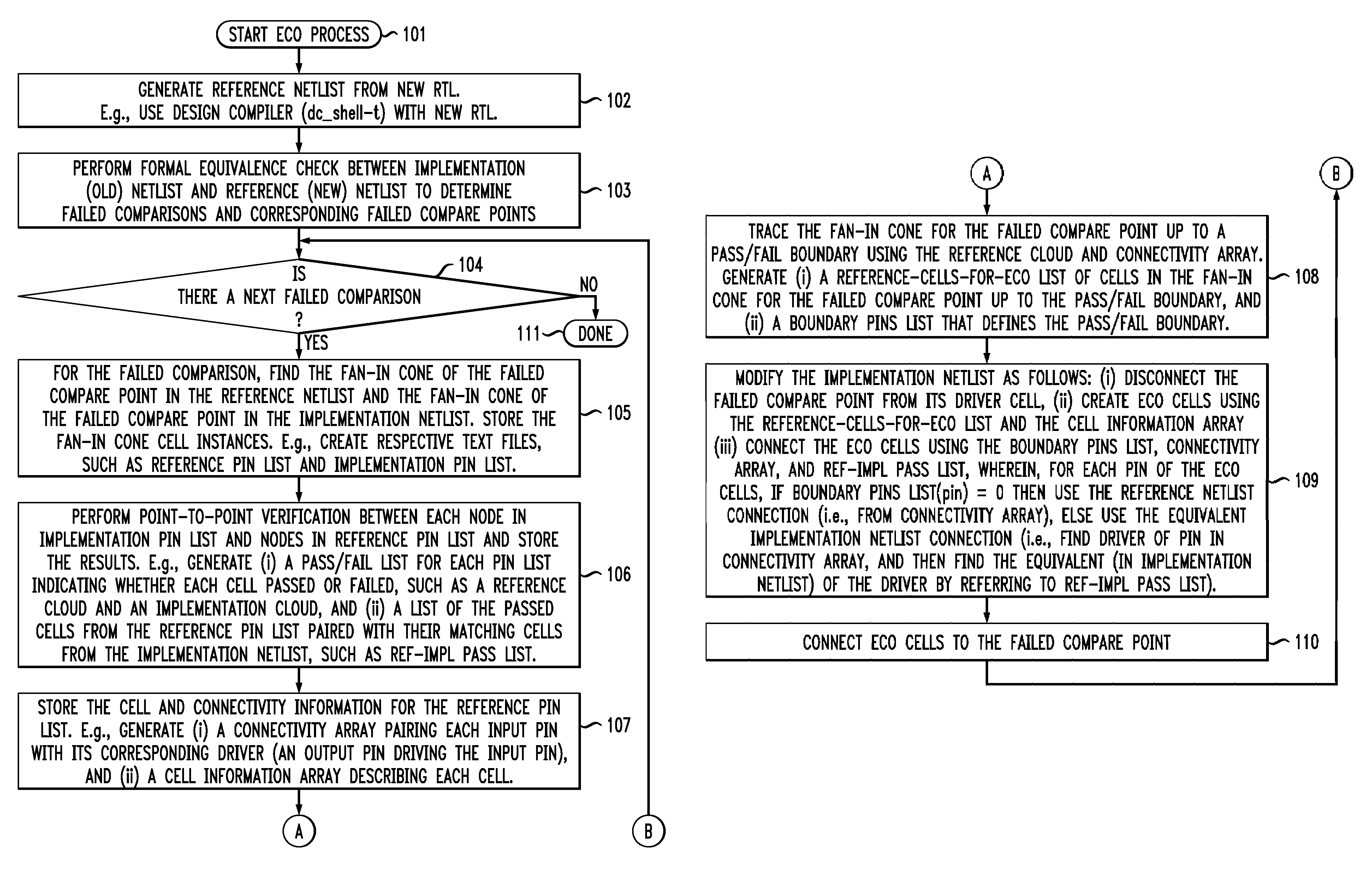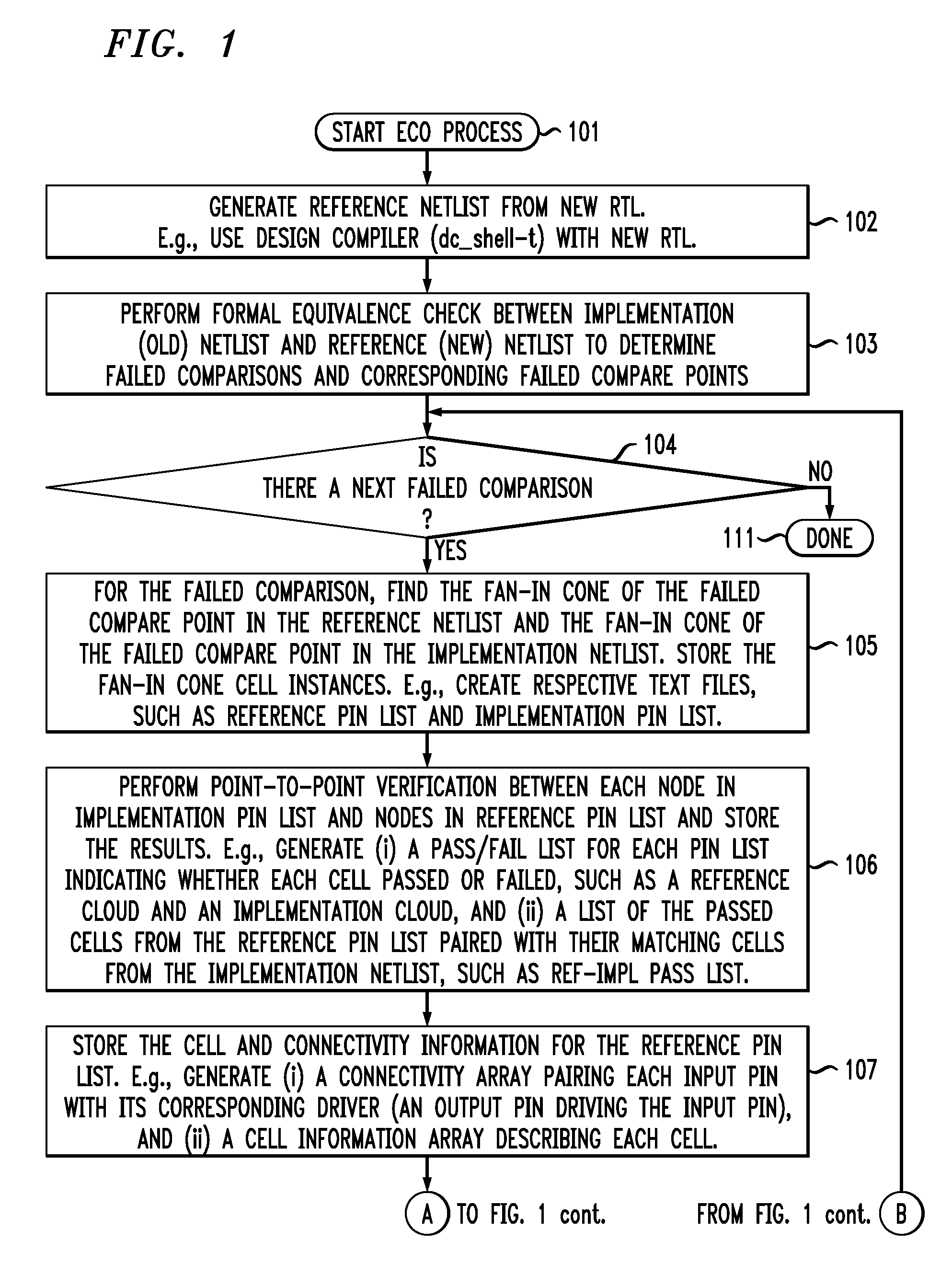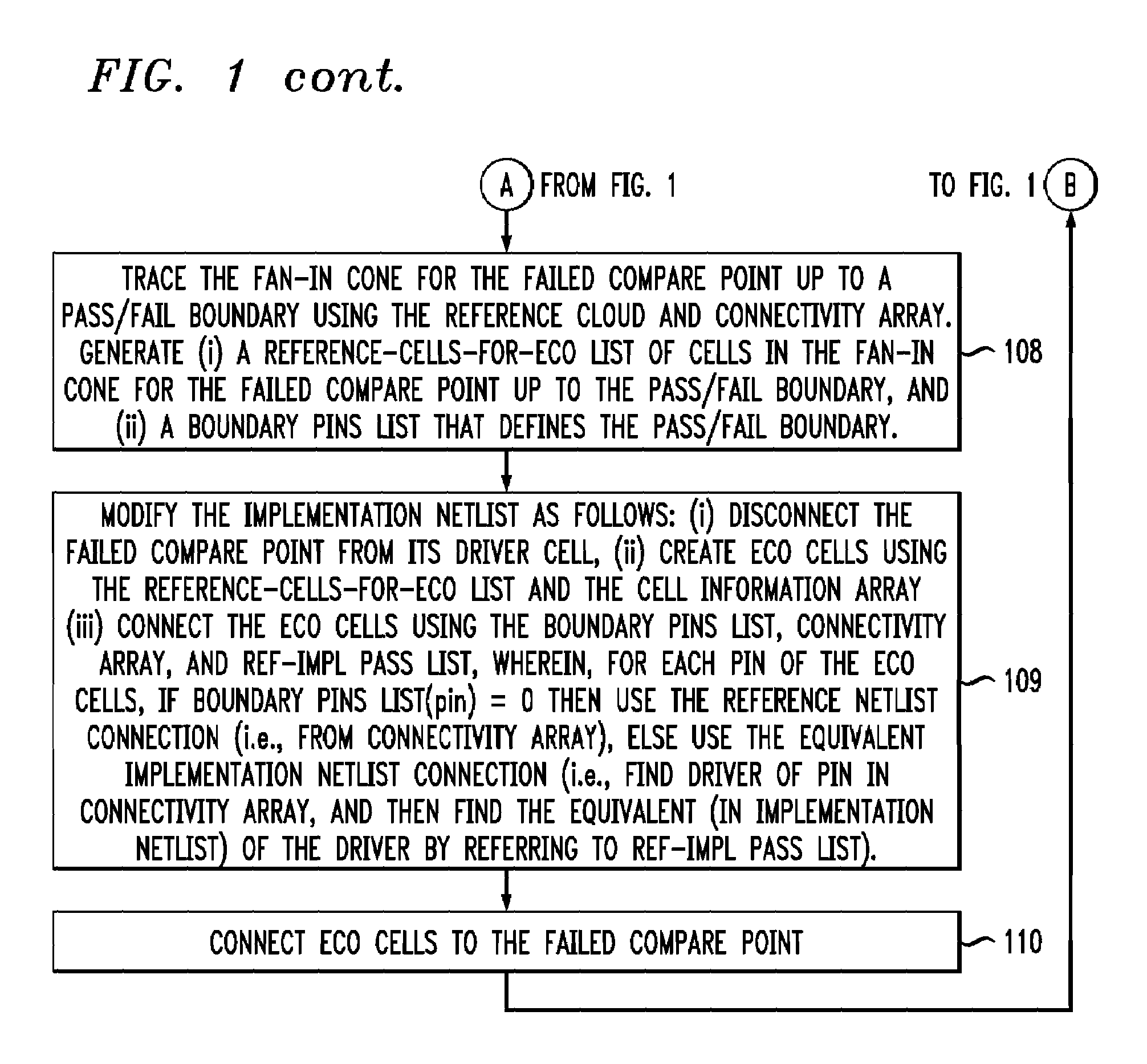Command-language-based functional engineering change order (ECO) implementation
a functional engineering and change order technology, applied in the direction of cad circuit design, program control, instruments, etc., can solve the problems of time-consuming and costly, complicated design of integrated circuits, and long time-consuming and laborious,
- Summary
- Abstract
- Description
- Claims
- Application Information
AI Technical Summary
Benefits of technology
Problems solved by technology
Method used
Image
Examples
Embodiment Construction
[0013]Another way to implement changes to the RTL design is to use an ECO (engineering change order) tool. An ECO tool uses the old RTL design, the new RTL design, and the old placed and routed netlist to generate an ECO netlist which is then processed to generate a new placed and routed database. The new placed and routed netlist defined by the new placed and routed database should be functionally equivalent to the new RTL design.
[0014]The generation of an ECO placed and routed netlist is accomplished in several steps. The old RTL design, new RTL design, and old placed and routed netlist are processed in an ECO-synthesis step to produce an ECO netlist. Then an incremental place-and-route tool is used with the old placed and routed netlist and the ECO netlist to remove the modified cells and connection nets and then place and route the new cells to produce an ECO placed and routed netlist.
[0015]The ECO-synthesis step referred to above, in which the ECO netlist is generated manually,...
PUM
 Login to View More
Login to View More Abstract
Description
Claims
Application Information
 Login to View More
Login to View More - R&D
- Intellectual Property
- Life Sciences
- Materials
- Tech Scout
- Unparalleled Data Quality
- Higher Quality Content
- 60% Fewer Hallucinations
Browse by: Latest US Patents, China's latest patents, Technical Efficacy Thesaurus, Application Domain, Technology Topic, Popular Technical Reports.
© 2025 PatSnap. All rights reserved.Legal|Privacy policy|Modern Slavery Act Transparency Statement|Sitemap|About US| Contact US: help@patsnap.com



